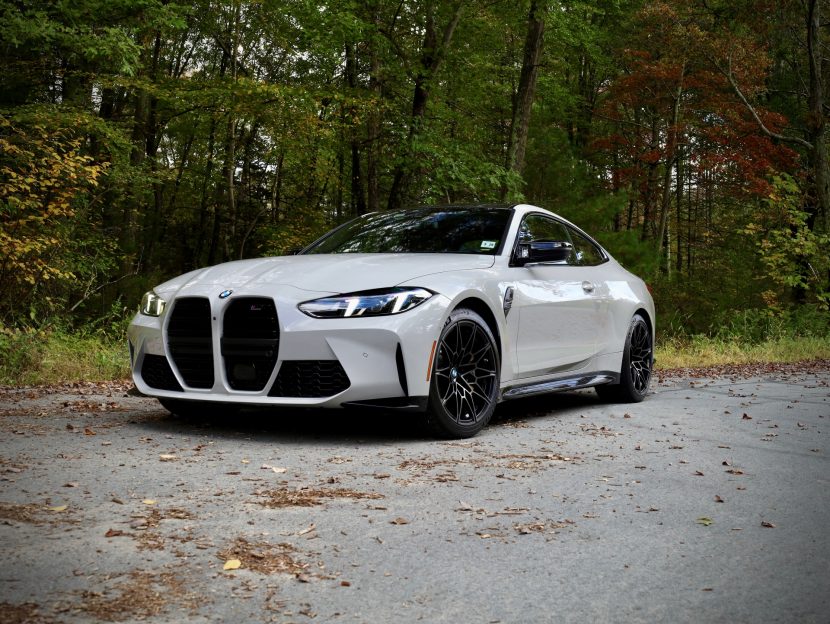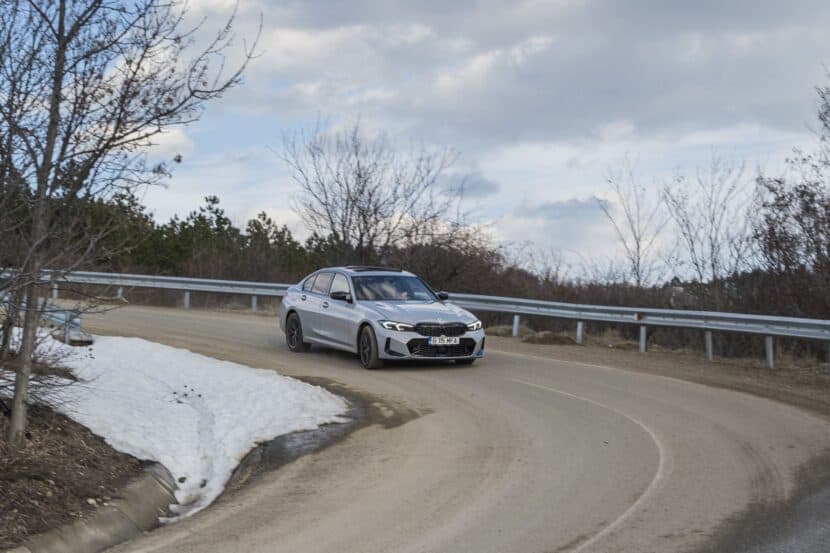Justifying the full M over the (sometimes) only slightly less high-performing M Performance model, or even a base model, isn’t easy. But one reason some will spring for the M3 over the 3 Series, for example, is a persistent rumor that claims M vehicles hold their value better. Using data gleaned by the researches over at iSeeCars, we put each M car up against its lesser in a different kind of face-off: one that will determine which holds its value better over a five-year period.
BMW 2 Series vs. M2 Depreciation
In five years, the regular BMW 2 Series loses around 52.3% of its full value. As it turns out, the M2 isn’t just much faster around a track. It’s also the better place to park some money, losing just 40.6% of its value over five years. Interestingly, this data indicates that, base-for-base, both the M240i and M2 lose around $27,000 over the same five-year span. This assumes both are purchased for their start MSRP. For the M240i, that’s $52,700 while the M2 starts at $68,200.
BMW 3 Series vs. M3 Depreciation
The M3 is one of the most iconic parts of the BMW M lineup. So, one would expect values to be good after five years. Residuals actually float around 54.2%, according to the data we have. Meanwhile, the standard 3 Series loses just 51.4% of its value, actually undercutting the legendary M car by just under three percent. Rather than calling out the M3, we have to admire both. Luxury cars holding around half their value after five years is uncommon at best. We see it as a testament to how in-demand the current 3er really is.
BMW 4 Series vs. M4 Depreciation


The BMW 4 Series Coupe loses 48.1% of its value in the first five years. That’s actually very good for any luxury car, but especially good for a luxury coupe. The BMW M4 Coupe beats the standard car handily, only losing 44.1% of its value in the same time. Meanwhile, droptop versions performed less impressively. The standard 4 Series Convertible loses 51.5% of its value in the first five years. M4 Convertibles outperform the regular car, only seeing 50.1% deprecation.
BMW 5 Series vs. M5 Depreciation
The BMW M5 is one cool piece of machinery, but the numbers aren’t doing hot. The high-performance super sedan loses 60% of its value in half a decade. The regular 5er, on the other hand, might surprise you by in fact doing even worse. The luxury mid-size sedan loses 61.4% of its value in five years. It will be interesting to revisit these numbers after the M5 Touring has had some time on the secondhand market.
BMW 8 Series vs. M8 Depreciation
Three different body styles means there’s a lot of data to dissect. Let’s kick things off with the 8 Series Coupe, which loses 52.9% of its value over five years. The (in)comparable M8 Coupe, meanwhile, loses 51.7% of its value. While those numbers are very close, it’s important to remember that the M8 Coupe’s base MSRP was around $40,000 more than the standard 8er. The BMW 8 Series Gran Coupe loses 60% of its value in five years.
Technically, the M8 Gran Coupe does a hair better, losing 59.6% of its value in the same time period. Finally, we have the M8 Convertible, which loses 54.5% of its original MSRP in five years. The 8 Series Convertible, again, fares just a bit worse than its M-badged brother, losing 55.1% of its value.
BMW X3 vs. X3 M Depreciation
You can’t exactly go out and buy an X3 M these days, unfortunately. But over five years, the data shows they’ve lost 52% of their value. Meanwhile, the regular X3 has dropped 53.9% of its original MSRP. Given the incredible volume of X3 SUVs sold, just over half isn’t completely awful depreciation for the model. More interestingly, the X3 M’s depreciation projections stay consistent at the seven- and ten-year marks. But we bet low-mileage, well-kept examples will beat these figures in the coming years.
BMW X4 vs. X4 M Depreciation
One of the most polarizing vehicles in the M lineup also has an interesting quirk when it comes to depreciation data. Both the X4 M and the BMW X4 will lose an identical 53.3% of their value over five years. This is the only model on the list with identical values across both models. Like the X3 M, we expect low-mile X4 M models to become collectable in the not-so-distant future.
BMW X5 Series vs. X5 M Depreciation
The BMW X5 M loses a fairly hefty — at least, relative to the aforementioned M SUVs — 56.3% of its value after five years. Funny enough, the regular BMW X5 doesn’t fare too much better, shedding 56.1% of its original sticker price in the same half decade.
BMW X6 Series vs. X6 M Depreciation
The BMW X6 loses 55.3% of its value in five years, which is just a little bit less than the full M version. The X6 M drops by 56.5%. Not only is it surprising that the X6 M loses more value than the standard car, but it’s also a bit surprising to see the X5 depreciate more heavily than the coupe X6 version. Though, perhaps the lower production of the X6 allows it to hold value just a smidge better
So — Do M Cars Really Hold Their Value Better?
Importantly, the data doesn’t measure interest or values after ten years. Which, coincidentally, is where many M versions start seeing their second life as collectors scurry after “future classics” with low miles and impeccable records. But even discounting this market phenomenon — which, in fairness, occurs with lower-tier vehicles to a small extent, too — it’s clear. Most M models retain value better than their respective non-M counterparts.
Although, the difference in depreciation is often extremely miniscule. And, from a raw numbers standpoint, that still means the M car is losing more money. Take the M5 as an example. The M5 loses 60% of its $121,900 MSRP over five years, or roughly $73,140. The 5 Series loses 61.4% of its value. So, a base $59,900 5er loses $36,779 over the same period. Of course, there are some things you can’t put a price on. The fun of an M car could be one of them — but that’s a decision the numbers won’t help you make. Well, these numbers, anyway. Go check some horsepower and zero to 60 figures and circle back, hmm?
Source: iSeeCars









